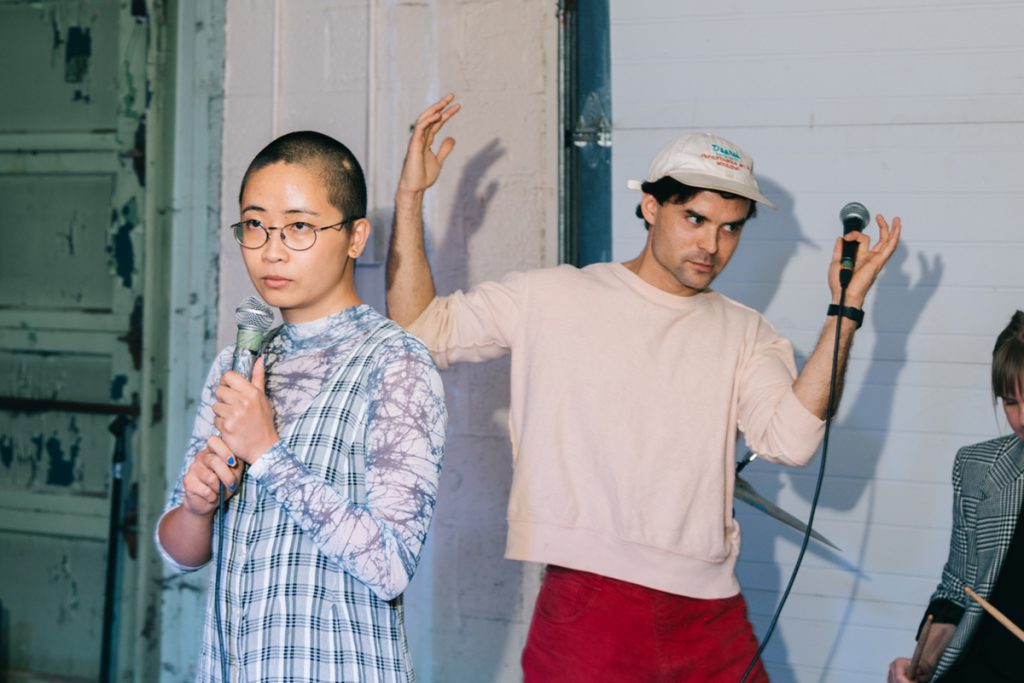Our Ancestors Are Laughing at Us: Talking Comedy, TV, and Cancel Culture with Life of a Craphead, Kiki, and more
4 March 2020
By Chelsea Rozansky
Part 1: A weird garage at the Toronto Biennial
Writing about the work of Life of a Craphead, the art collective of Amy Lam and Jon McCurley, Artists-in-Residence during the Toronto Biennial of Art (September 21 – December 1, 2019), presents one with the frustration of explaining a joke. “We’re not really giving people anything to work with other than we make funny art and we’re racialized people,” McCurley tells me. “And there’s two of us,” Lam offers. There is a set-up, punch line quality of much of Craphead’s work.
For example, Ceiling with Clowns (2018), is a checkerboard ceiling made of glass and bamboo, which you stand under to experience what it feels like to be an Asian woman. The work was originally accepted for a biennial but was later rejected by the biennial’s board on the grounds that “it’s not that funny,” and “impossible to build,” according to Lam and McCurley’s artist statement. So, Craphead exhibited the same sculpture with clowns sitting on top of it at Centre CLARK in Montreal, and had children help install it. The punchline gag quality of Craphead’s work is something they are trying to move away from as their practice is evolving, but nonetheless offers an interesting vantage point from which to view the work of criticism. Humour invites the audience to do the work a critic typically does. Art criticism, at its worst, explains how to “get” art, and everybody knows that explaining a joke ruins it. But humour also gets rid of the middleman because it requires your participation: when you laugh, you’re implicated. “Funny-sad” is the term Craphead decided on in our interview for the tone of their work. McCurley’s being modest when he says “we make funny art and we’re racialized people,” but it’s true that Craphead’s art is about racial trauma and important that it’s funny. The critique from white board members that “it’s not that funny” is offered by those who don’t seem to get the joke, perhaps because they’re at the butt end of it. Lam and McCurley began collaborating as stand-up comics in 2006, performing in comedy clubs in Toronto. Their performance practice didn’t really fit into the comedy scene at the time, which they describe as too misogynistic, but programming for performance art was also so infrequent that it was hard to practice and improve. Witnessing comics get better from the hustle and grind of regular performances, they wanted to create a similar context for performance art. Transplanting the comedy show model, Craphead created Doored, a live performance show which Lam and McCurley organized and hosted in Toronto between 2012 and 2017. They gave themselves the arbitrary timeline of thirty bi-monthly editions—and, as it turns out, they were providing a framework that other performance artists also craved. After they were invited to bring the popular show to the Toronto Biennial, Craphead changed the title to Doo Red, with a space in the middle, to signify the two-year gap since their last show.
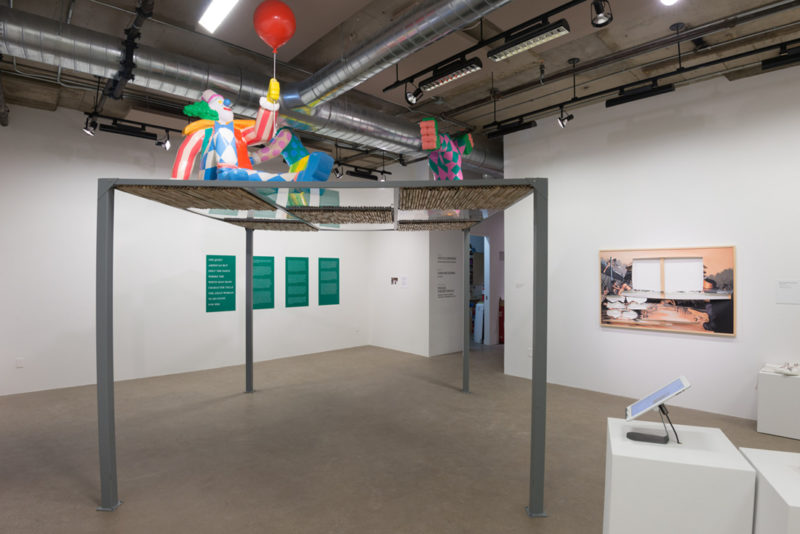
The main focus of Craphead’s residency at the Biennial is the production of a sitcom-style TV series. Their last movie Bugs (2016) took five years to produce. Wanting to make something faster, they were attracted to the cap-on structure of TV series with a set length and duration. Craphead planned on using their residency to make the pilot. While the show seemed to evade definition in our discussion, Lam described it as “autofiction meets traditional sitcoms about comedians”: a blend of documentary footage from performances like Doo Red, and fictionalized recreations of the fall-out of their art practice and daily life. “On the most basic level it’s about us working as artists and whatever that means. This is a bit scary because it’s revealing some part of our practice,” Lam says. “Hopefully that isn’t specific to us, but connected thematically to what’s happening in Toronto politically, and how that relates to artists,” she continues, “How do you build community with other people in this kind of world that doesn’t encourage that? But then it’s like comedy.” McCurley adds, “We’re not telling people it’s about frustrations in dealing with different institutions or something like that, or dealing with our friends getting along. We’re not describing it like that—we don’t even know yet,” but the fact that this negative description also functions as a give-away speaks to the enigmatic power of their work: revealing something in the act of concealing it as a joke.
Faced with the problem of writing critically about Life of Craphead’s artwork, I turned to British art historian Claire Bishop’s essay, “The Social Turn: Collaboration and its Discontents,” first published in Artforum in 2006. (1) Here, Bishop defines community-based art as work that employs collabrotation, collective labour and social engagement. (2) While this topic is not foreign to Craphead’s practice, their work, as I’ll later suggest, is also not reducible to this umbrella of participatory art or social practice. Bishop further argues that participatory practices seek in vain to position themselves against spectacle, their mythic opposite, because, following in such schools of thought as the 1960s French leftist collective the Situationist International, (3) passive spectatorship in a culture mediated by images seems synonymous with our alienation under capitalism. (4) This led to a hunger for artwork that isn’t about the contemplation of objects and images but about building communities that carve out space away from and against fine art’s visual regime. Bishop suggests, however, that because social practice is still art—which trades in images—participation and spectacle are not actually opposed but end up collapsing into one. (5)
The staging of Doo Red as part of their TV show reinforces the seamlessness at which participatory practice may be reconfigured as spectacle. McCurley’s description of the TV show suggests as much. “This is giving away the show, but one way that we put humour into that context”, McCurley says, “How did you describe it? Stressful-sad?” he asks Lam (“Funny-sad”). “There’s this element that’s unreal, that we’re being watched by the ghosts of our ancestors and they’re laughing at us.” After our interview, I remember my attempt at anonymity within the audience to Doo Red, despite the three-of-seven performances that leaned on some kind of viewer participation, and my horror at later glimpsing images of myself in the video recording of the show. This recording, I now know, is footage for a TV project where my imagined ancestors make fun of me stumbling zombie-like as artist Aliya Pabani, in her Doo Red performance, asked us to walk through an arbitrarily zigzagging pathway then turn around anticlimactically and return to our seats. I consider Bishop’s critique of participatory art that never successfully escapes its aestheticization next to McCurley’s explanation of how the Doo Red events, which I naively believed I would get to passively enjoy, will be part of a TV show “where everyone’s always being judged by the ghosts of your past relatives who’re like, ‘look at this loser’.” Being in on a joke that’s only funny because it’s ‘funny-sad’ often means you’re also the butt of it.
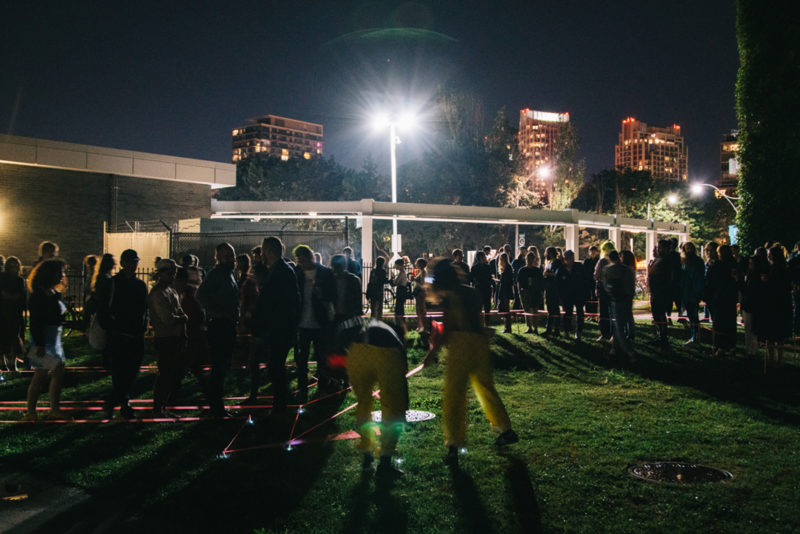
Bishop pinpoints the “unprecedented expansion of the biennial” as a factor in collective practices’ “increasingly conspicuous presence in the public sector.” (6) When Bishop published her essay in 2006, “thirty-three new biennials have been established in the past ten years alone, the majority in countries until recently considered peripheral to the international art world.” (7) Following Bishop’s logic that socially or politically engaged artworks are not exempt, but can in fact perform spectacle, it’s worth wondering if the social practice bandwagon Bishop observes might be a reason for the Toronto Biennial’s interest in Craphead’s work, and since we’re still in the realm of spectacle, whether it might look good or serve as morally flattering on the Biennial’s part to program artists in residence who often employ institutional critique. It is also worth wondering whether Toronto’s relation to the international art world is, as categorized in Bishop’s Artforum dis, peripheral.
Part 2: Good intentions and their presentation
“What the fuck’s the Biennial?” Hannia Cheng asks in her introduction to Doo Red.
“I said biennale and everyone was just so happy. They were like ‘Oh, bienniale! Biennale!’” Oliver Hussain says into a cell phone speaker in the first performance of the night. “It was really great to see this excitement. They’re all like, ‘2021! In two years!’ They couldn’t wait.”
Private conversations I’ve had about the Toronto Biennial were about its pronunciation and spelling: “biennial or bian-nale?” “I-A-L or L-E?” “I don’t know. I’ve heard people say both,” confessed a friend who works for the Biennial. Hussein’s performance made fun of both the Biennial, and the bizarre space provided for Craphead’s residency, which was also the venue for Doo Red: a garage under renovation in the Ireland Park Foundation, a public park next to the Billy Bishop Airport. If Craphead’s TV project is about what it’s like to live and work in Toronto, then the Ireland Park Foundation gave them the set up for the oldest (and lamest) joke about Toronto: it’s constantly under construction. “I’m in the cab, and we got into some sort of traffic jam. The cabs didn’t move. There were cabs all around me. Like a cab jam,” Hussain says, still over speakerphone, poking fun at the absurdity of a venue planted next to an airport parking lot. “But then I realized I’m actually really close to the venue, [with]in walking distance. If you opened the garage door behind you, I could actually literally see you with my eyes.” Sitting in this scrappy venue space on the edge of the city seemed an apt metaphor for the peripheral position of Toronto’s Biennial, especially following the biennale in Venice that everyone here couldn’t stop talking about last spring.
While Hussain’s biennale joke was about Venice, the controversial biennial that Toronto emerged in the wake of was last year’s Whitney Biennial in New York (May 17 — Oct 27, 2019). All summer, news about the Whitney centered on the then-vice-chair of the board at the Whitney Museum of American Art, Warren B. Kanders, who owns Safariland, a private company which manufactures weapons for military, police forces, and which makes and distributes tear gas used by US Customs and Border Protection on detainees at the US border. In response to Kanders’ exposure, many artists pulled their work from the biennial, and called upon others to do the same. Artists and activists wrote letters pressuring Kanders to step down from the board. Activist groups protested on site. Some artists who did not pull their work made explicit artwork addressing Kanders, including the Forensic Architecture work Triple-Chaser (2019), a video work which trains AI to track images of Safariland’s use of tear gas. Kanders’ position on the Whitney’s board serves as a sobering reminder of the art world’s indebtedness to the violence of corporate capitalism. The poor timing of Toronto’s first biennial was its marred inauguration in the midst of the Kanders controversy at the Whitney, and the cast shadow of institutional mistrust.
Kanders himself was silent until a letter signed by nearly 100 Whitney staff members circulated in the museum. The letter condemned a lack of response from higher-ups at the Whitney and demanded the museum ask Kanders to resign. On July 25, 2019, he stepped down from the board.
“The staff letter implies that I am responsible for the decision to use these products. I am not. That is not an abdication of responsibility, it is an acknowledgement of reality…I am not the problem the authors of the letter seek to solve,” Kanders finally wrote in response to the staff letter. (8)
Back in the Doo Red garage, Kiera Boult seems to inadvertently parody the above statement. “I am un-cancelable because I am accountable and transparent and I fear nothing,” declares Kiki, the performance alias of Boult, during Kiki Gets Cancelled (2019), a faux-ousting by way of glitzy public trial. Kiki, looking very cute in a baby pink spandex costume, accessorized with a matching cowboy hat, sequined veil, and leopard print belt, saunters on stage to a canned soundtrack of roaring applause, and blows kisses to her imagined already-adoring fans. Her executor, a half-naked hot guy (Matthew Crans), dripping in fringe and wagging a metallic sword, arraigns Kiki for her cancelable offences. One charge: “On July 23, 2016, Kiki peed in a foyer for revenge.” Another charge: she claims to be a community organizer, but “fights with all her roommates.” Boult’s performance grapples with Bishop’s critique of participatory practices: “artists using social situations to produce dematerialized, anti-market, politically engaged projects that carry on the modernist call to blur art and life.” (9) Here again, we can imagine the presence of Craphead’s ghosts in the room watching us fail. It’s a funny joke that Kiki pees on the floor and fights with her roommates, but it also exposes something sad. “I make fun of myself because I understand what I stand for, which is a light-skinned, university educated woman, and in cancelling myself, I am also cancelling the structural failures of equity and diversity,” Boult tells me in an interview. “By being in on the joke, you are always going to be accountable and always going to be transparent.” By making fun of her persona, the artist is able to openly work through and explore art’s dilemmas and shortcomings. “I feel this failure as a black artist who makes white audiences laugh so hard and whose work is really easy to program into an institution,” Boult says. In her performance, it is the same moments that expose contradictions and nuance where we witness the enigmatic power of humour (to reveal something while concealing it as a joke) that Craphead also achieves.
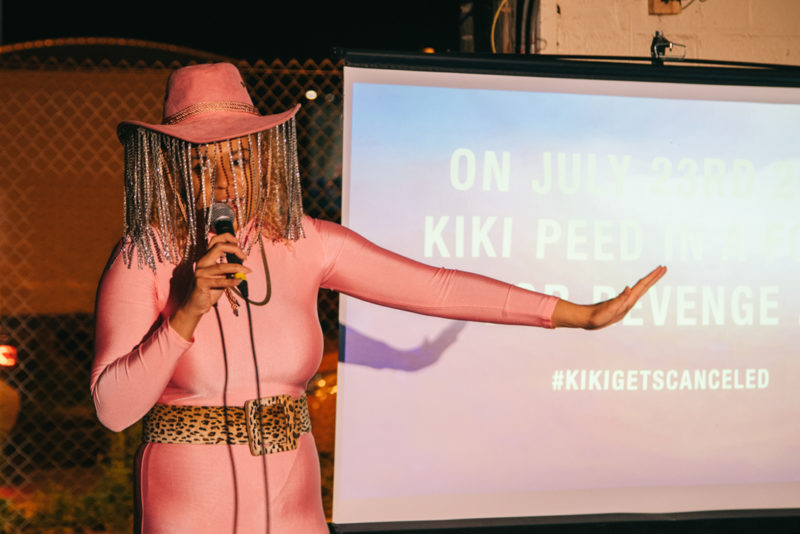
On stage, when Crans accuses Kiki of hypocrisy in the discrepancy between her politically engaged art and her private behavior, she does something brave: she commits to the part. “I am no longer an artist that is committed to any kind of social practice,” Kiki pleas in her defense. But since this is performance art—this plea is just for show. Kiki can fail before our eyes but she hasn’t given up. “The joke of Kiki Gets Cancelled,” Boult says, “is that these are real things that I fear of people finding out…and the safety of the persona was like “you can cancel that persona and I, Kiera Boult, am not going to get canceled. It’s putting the responsibility on the persona and not the actual person.” Because there’s a safety in persona, and because she’s in on the joke, Boult can simultaneously hide within her art practice and use it to unmask such structural failures of social practice.
Compare Kiki’s public trial to Kanders’ apology. (Which is not a joke.) His letter to the Whitney Board of Trustees, written prior to his decision to resign, ends, stunningly, with the following statement: “My involvement with the Whitney also reflects my personal values around diversity, inclusion, access and equality.” This from the guy who makes profits off weapons used for border security. He goes on, “In fact, just last month, I co-organized a series of exhibitions, installations and public programs at Brown University entitled ‘On Protest, Art & Activism’. I believe that my record speaks for itself…” (10) If Bishop is correct in her critique of “this mixed panorama of socially collaborative work,” which uses “politically engaged projects to carry on the modernist call to blur art and life,” (11) then Kander’s artistic endeavors proves the ultimate spectacle of life blurred behind art.
“Participatory practices re-humanizes—or at least de-alienates—a society rendered numb and fragmented by the repressive instrumentality of capitalism,” (12) Bishop describes of participatory art’s raison d’être. But Kanders’ cynical adoption of the goals of participatory artwork serves as a reminder of art’s inability to break free of capitalism’s choke hold. “Warren B. Kanders didn’t earn his place as vice chair of the board at the Whitney Museum of American Art through his good taste alone,” begins a recent Artforum article by Hannah Black, Ciarán Finlayson, and Tobi Haslett, calling on artists to pull their work from the biennial. “He has also used some of his estimated $700 million fortune to make tax-deductible donations to support exhibitions at the museum,” which presumably includes the money put to the anti-establishment public programming Kanders boasts about in his letter. (13) It is well known that investing in art is a form of money laundering for the über-rich, but when you’re investing in public programming, which as Bishop points out, “has a relatively weak profile in the commercial art world,” you clearly have more than just money to hide. (14) Moreover, the Whitney’s acceptance of Kanders’ dirty money, only up until his laundry was so publicly aired out, plus the philanthropic guise that Kanders’ seeks to hide behind, proves just how extremely morality can be performed as spectacle. When Kanders’ gets cancelled, all that’s revealed is that the show just goes on.
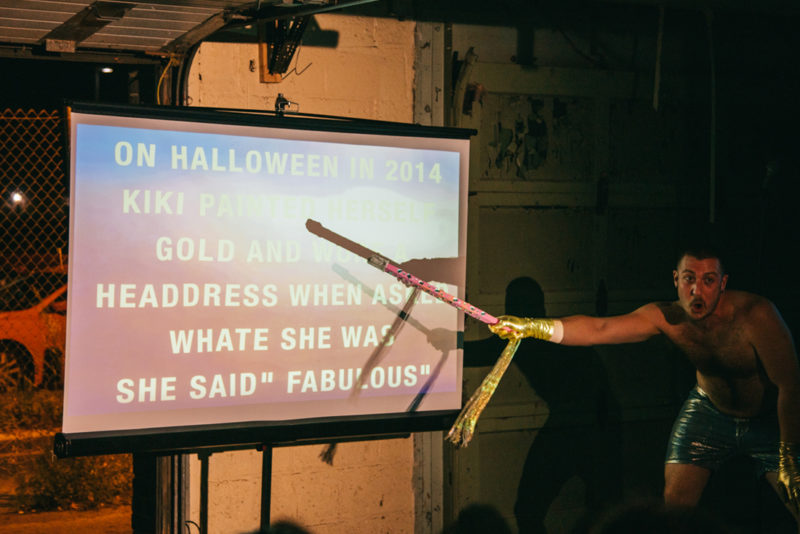
When the audience laughs at the final charge in Kiki Gets Cancelled (“On Halloween in 2014, Kiki painted herself gold and wore a headdress. When asked what she was, she said ‘fabulous’”), Boult points to them and says: “Okay, you are all cancelled for laughing at that,” a reminder, again, that laughing is an admission of guilt. It’s also a nervous reflex—a telltale of discomfort and confusion. “You’re able to laugh and you’re able to feel complicated,” Boult explains of her performance. This kind of laughter may serve as catharsis from the spectacle of cancel culture, which as Boult points out, fuels a kind of panoptic fear of being exposed. It goes without saying that while there are serious offenses like Kanders, the ones’ Boult explores in her performance are not. Yet, in all instances, cancel culture is too performed as spectacle—hence its typical association with celebrity (as in, #MeToo), or network TV (as in, the show was cancelled), and now also includes the flashy performance of Kiki Gets Cancelled. Within the spectacle of cancel culture, moral judgments become levelled to aesthetic judgments. Here, cancel culture mirrors and inverts the effect of participatory artwork, wherein, as Bishop argues, aesthetic judgements become levelled to ethical judgements. “What serious criticism has arisen in relation to socially collaborative art has been framed in a particular way: The social turn in contemporary art has prompted an ethical turn in art criticism,” (15) she writes. Bishop cites a number of art critics who endorse this type of ethical criticism, including the Dutch critic Erik Hagoot, who argues in his book Good Intentions: Judging the Art of Encounter that “we must not shy away from making moral judgments on this art but must weigh the presentation and representation of an artist’s good intentions,” as if what’s at stake in a good intention is its presentation. (16) It’s worth noting that representation is a term that comes from visual art. The consideration of representation in art amounts to a question of optics, and it is through this logic that cancel culture arises. If ethics are a matter of representation, then an ethical response is also about optics. A person is cancelled like a TV show is cancelled. Like you can turn someone off if you don’t look. Like just looking is enough. While turning themselves into spectacle, both cancel culture and social practice evade their actual goals of building better communities. “Once we all get cancelled, we can all start doing the real work of equity,” Boult says. “We’d be able to work together better and love each other better, as opposed to constantly attacking each other or waiting to be cancelled. It just seems impossible to get anything done if you’re constantly hiding something.” How do you build communities in a world that doesn’t encourage that? Lam had asked me once. Perhaps Boult’s suggestion offers a place to start.
Part 3: Crying a river about art and politics
The confusing collapse of one oft-perceived binary—spectacle and participation—parallels a confusing collapse of another oft-perceived binary: art and politics. Take Life of a Craphead’s 2017 performance King Edward VII Equestrian Statue Floating Down the Don River, where the artists made a life-size replica of the 15-foot bronze sculpture situated in Queens Park, and dumped it in the Don Valley river. The original statue, which has a plaque naming King Edward “The Emperor of India,” was originally erected in India by British colonizers in 1922, then moved into storage after India’s independence in 1947. Transport of the statue to Canada was later paid for by a Toronto businessman because, according to Lam and McCurley, he wanted the city to have “a big statue”. (17) Craphead put on four editions of this performance. During one of them, a white supremacist group showed up to protest the artwork and filmed the performance. (18) The presence of the two groups—protestors on one side and artists on another—collapses, if only for a moment, the typical frames of reference an audience or bystander might employ to recognize one type of project as art, and one type of project as politics. Protest is typically recognized as political action, and if art is understood as political, it is usually only to the extent of symbolic gesturing, which, as Lam says, “the art world trades in.” Creating a replica of the statue, and “throwing it in the river,” she continues, “that’s symbolism. That’s not politics in the sense of going to city hall and asking John Tory to take it down.” This distinction between performing politics and perform(ing)/ance art becomes muddled, because what is organizing a protest if not putting on a show of care, or a demonstration if not a performance?
For Craphead, the King Edward work amounts to a gag. The statue replica is made of foam, paint and resin. It’s just a prop but “supposedly it’s worth something because it’s an art project,” Lam says. (To which, McCurley interjects, “it’s worth nothing.”) The statue is this mysterious inconvenience that’s valuable and meaningless without its context. In their TV show, it’s something to laugh at: “you have to store [the statue] somewhere, this enormous, fragile thing that always has to keep existing,” says McCurley. “It’s kind of like the most annoying thing you can own,” explains Lam. In Craphead’s show, the King Edward piece is a comedic prop that literally doesn’t fit anywhere, but it stands as a symbol for the awkwardness of art and politics that don’t fit in their boundaries.
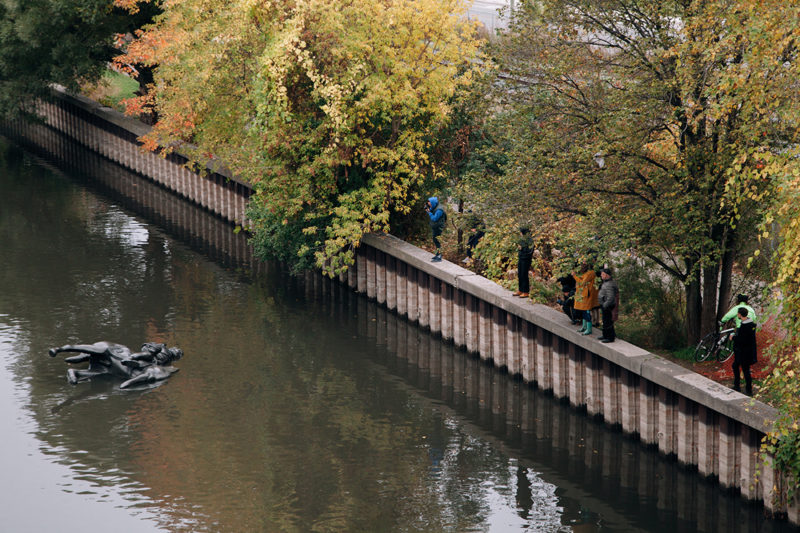
Part 4: The enigmatic power of funny-sad
Craphead and Boult both share ambivalence about the role of comedy in their work. The artists began in stand-up and moved away from it for different reasons. Boult, who described her style as a performer as “essentially a stand-up comedian with a camel toe,” says she left comedy because she’s too much of a diva for it. She worries about her art’s effectiveness precisely because it’s funny, which she fears is trivializing since it’s palatable. Doored—which has been presented at institutions like the Art Gallery of Ontario, and venues in LA and New York, and was for a long time hosted at the now-defunct Double Double Land in Kensington Market, an artist-run space that was co-founded by McCurley—straddles the line between the art institution and grassroots community building. “What I appreciate about Doored is everybody uses humour in a different way, and they don’t hate themselves for using it,” Boult says. “I feel grateful that they have created a context for my practice to exist where I don’t have to feel like a sell-out.”
Because Craphead’s work is funny, Lam expresses fatigue at suggestions that their work must either be art or comedy, and offers instead that their artwork uses humour rather than comedy. “People use humour all the time. It’s how you feel someone out. Comedy is a genre. It’s also an industry: it’s TV, it’s stand-up. These things are just different,” she says. First, with Doored, and now their new autofiction TV project, Craphead set-up a framework for themselves borrowed from the industry of comedy: the stand-up comedy show, and the TV sitcom. If they are frustrated by questions about whether their work is art or comedy, by borrowing from and then breaking away from comedy’s limitations, what their art then offers is a humorous critique of comedy. When I ask about Craphead’s draw to humour, McCurley says, “it’s just about communication. It’s how you make someone look at you or listen to you.” Humour also embraces contradiction. Things can be funny-sad.
Describing her performance practice, Boult says, “I often joke about my performance as this overfeeding of the ego, and then quickly starving the ego to balance this giant persona.” Echoes of this narcissistic binge-purge cycle ring in Bishop’s conclusion to Artificial Hells. “In a world where everyone can air their views to everyone, we are faced not with mass empowerment but with an endless stream of egos leveled to banality,” Bishop writes. (19) We consume this endless stream of egos like binge TV. “Far from being opposed to spectacle, participation has now entirely merged with it,” Bishop writes. Frustrated by art and criticism that “reduce art to a question of ethically good or bad examples,” she instead offers that the most interesting art proposes contradictory and novel modes of thinking: a criteria for evaluation other than a moral rubric of good vs. bad art. (20) “The most challenging works of art do not follow this schema because models of democracy in art do not have an intrinsic relationship to models of democracy in society. This equation is misleading and does not recognize art’s ability to generate other, more paradoxical criteria,” Bishop writes. (21) Craphead’s humour does this. Instead of creating artwork that is didactic, or propagandistic, or else work that eschews aesthetic contemplation, Life of a Craphead’s artwork creates an open door. And despite their reservations, there is something to be said for Craphead’s inability to shake comedy. Their artwork is akin to the certain participatory art Bishop champions in her conclusion, where “the relationship between artist/participant is a continual play of mutual tension, recognition and dependency—more akin to…the collectively negotiated dynamic of stand-up comedy.” (22) Plus art can be so stuffy, and biennials can be so disappointing. Doesn’t it take the edge off a bit, after all our efforts and best intentions, to catch a glimpse at ourselves through candid eyes and be like: “look at this loser?”
1. Which later becomes the first chapter of her book Artificial Hells: Participatory Art and Politics of Spectatorship, 2012.
2. Bishop, Claire. “The Social Turn: Collaboration and its Discontents.” Artforum, February 2006. 178-83.
3. Bishop, Claire. Artificial Hells: Participatory Art and The Politics of Spectatorship. London: Verso, 2012.
4. Bishop. “The Social Turn: Collaboration and its Discontents.” Artforum, February 2006. 178-83.
5. Bishop. Artificial Hells: Participatory Art and The Politics of Spectatorship. London: Verso, 2012.
6. Bishop. “The Social Turn: Collaboration and its Discontents.” Artforum, February 2006. 178.
7. Ibid., 178.
8. Kanders’ open letter to the Whitney Board of Trustees, published by Artnews.
9. Bishop. “The Social Turn: Collaboration and its Discontents.” Artforum, February 2006. 179.
11. Bishop. “The Social Turn: Collaboration and its Discontents.” Artforum, February 2006. 179.
12. Ibid., 180.
13. Black, Hannah, Ciarán Finlayson, and Tobi Haslett. “The Tear Gas Biennial.” Artforum, July 17, 2019.
14. Bishop. “The Social Turn: Collaboration and its Discontents.” Artforum, February 2006. 178.
15. Ibid., 181.
16. Hagoort, Erik. Good Intentions: Judging the Art of Encounter. Amsterdam: Foundation for Visual Arts, Design and Architecture, 2005. 185.
17. From the information provided on Life of a Craphead’s website: http://www.lifeofacraphead.com/king-edward-vii-equestrian-statue-floating-down-the-don-river/
18. https://canadianart.ca/news/life-of-a-craphead-don-river/
19. Bishop. Artificial Hells: Participatory Art and The Politics of Spectatorship. London: Verso, 2012. 279.
20. Ibid., 279.
21. Ibid., 279.
22. Ibid., 279.
The Doo Red performance was organized and hosted by Life of a Craphead on September 28, 2019 as part of their project for the Toronto Biennial of Art Residency Program from September 9 – November 1, 2019 in Toronto, ON.
Feature Image: Life of a Craphead (Amy Lam and Jon McCurley) host during the Doo Red performance on September 28, 2019 for the Toronto Biennial of Art. Photo by Yuula Benivolski. All photos courtesy of the artists.

